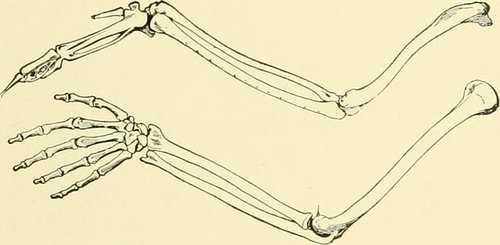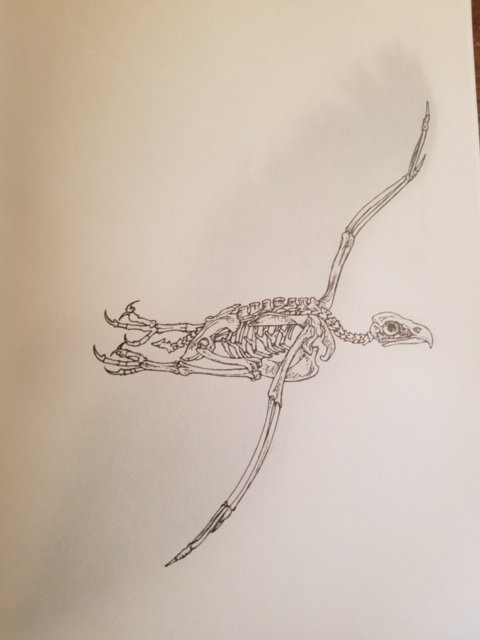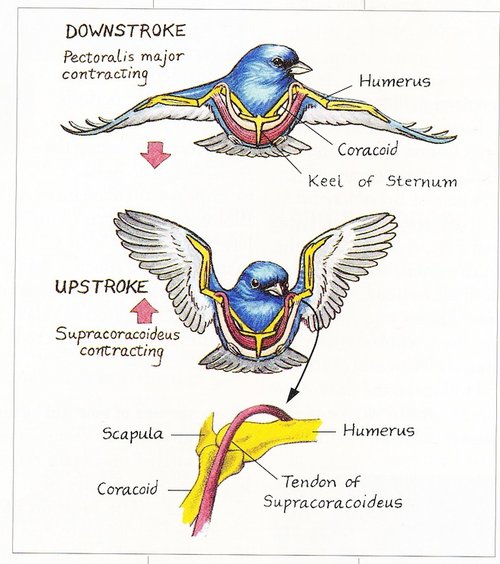Hanover Bald Eagle Blog # 28
In partnership with Pennsylvania Game Commission and Comcast Business .
Lately we have been seeing the eaglets flap and spread their wings as they test out their feathered appendages and learn how to coordinate movements. Flight is one of the most enviable gifts that exists within the animal kingdom, and although humans have done an impressive job at recreating the experience via our technological advances, nothing quite compares to the natural grace of a bird. To achieve aerial prowess, a young eagle must develop the anatomical necessities that make flight possible. Many groups of animals such as mammals exhibit a wide diversity of anatomical structure, yet the basics of the bird body are very similar across all flighted species. It turns out, there are only so many ways to achieve flight.
Skeletal adaptations such as light bones, fused thoracic vertebrae, a flexible neck, a keel-shaped sternum, and a wishbone are just some of the important pieces to the puzzle of avian flight. Without these architectural modifications, birds could not fly, regardless of whether or not they possessed feathers (flightless feathered birds such as ostriches are an example).
A unique system of struts within the bones of most flighted birds allow for airspace, lightening the overall weight of each bone, yet preserving their structural integrity. Some airplane wings possess an almost identical composition called the Warren truss, providing for lightness without the sacrifice of strength. The fusion of several key bones adds rigidity and lightness to bird skeletons, without compromising the sturdiness necessary for those that will likely combat winds, weather, and other forces of nature while airborne. Birds are also the only vertebrates with a fused collarbone, known to many of us as the wishbone. The unique shape of the wishbone serves as an anchor for powerful flight muscles, while also protecting the chest cavity during upstroke.
The anatomy of the bird wing shows a surprising likeliness to the human arm. Birds too possess a humerus, ulna, carpals, and modified digits! The reduction in number and length of a bird’s forelimbs, and the fusion of several key bones in the wrist and hand enhance strength of the wing. They also provide attachment points for flight feathers.

Comparison of bird and mammal arm
Photo Credit: Smithsonian
The two most important muscles for flight are called the supracoracoideus, which raises the wings, and the pectoralis, responsible for the downward power stroke. Without the complex skeletal structure noted above, the attachment of these muscles would not be possible. For example, the human sternum does not have enough surface area to support large enough muscles necessary for flight. Birds, however, possess a vertical keel that substantially increases the surface area of the sternum and allows for the attachment of the upstroke and downstroke muscles, therefore allowing a bird to raise and lower its wings using one ingenious pulley system!

Drawing of bald eagle skeleton
Photo Credit: Dave Hughes

Muscles involved in the upstroke and downstroke during flight are colored in red.
Photo Credit: Denise Takahashi
Intriguingly, the presence of a keel has become a helpful indicator for paleontologists as to whether or not a fossil belongs to a flighted or flightless bird. The size of a bird’s keel also reflects the size of the bird, meaning the larger the keel the larger the bird it belongs to. Bald eagles therefore have a larger keel than many other species. The tissue types that compose these key muscles differ depending on species and their corresponding flight behavior. Red muscle fibers are responsible for sustained flight over long periods of time. White muscle fibers are used in explosive movements over short durations. Just as we utilize different muscles for sprinting versus long distance running, soaring birds like the bald eagle possess a higher ratio of red muscle fibers in their breast muscles than say, a grouse which frequently engages in short bursts of flight.
The Hanover eaglets have gone through three stages of development thus far. First was skeletal growth, then feather development, and now they are in the home stretch of behavioral and neurological advancement. Not all structural development occurs at the same time (as we noticed, the eaglet’s feet were disproportionately huge during the earlier stages of their life, giving them an endearing and awkward appearance). At about 60 days old, the Hanover eaglets were already at 90% of their adult weight, and now they are 95% of the way grown. If one of these eaglets is a female, she will already be larger than Freedom!
During these final two to three weeks before fledging, we will likely see the eaglets increase their activity levels inside the nest. Typically, male eaglets show higher levels of restlessness than females, and fledge sooner. One in seven eaglets fledge early, sometimes spending a few days on the ground before their first flight.
We are nearing the final step which is, well, just that: stepping out of the nest and testing out their full-grown wings!
SOURCES
Gerrard, Jon M. & Bortolotti, Gary R. (1988). The Bald Eagle: Haunts and Habits of a Wilderness Monarch. Smithsonian Institution.
Page, Jake & Morton, Eugene S. (1989). Lords of the Air. Crown Publishers New York New York.
Wilson, Herb. (2011, January 13). Bird Muscles. Retrieved from https://web.colby.edu/mainebirds/2011/01/13/bird-muscles/
Greij, Eldon. (2019, January 8). The Amazing Muscles and Bones that Make Birds Fly. Retrieved from https://www.birdwatchingdaily.com/news/science/the-amazing-muscles-and-bones-that-make-birds-fly/

RETURN TO HANOVER BALD EAGLE BLOGS
WATCH THE HANOVER BALD EAGLE LIVE CAMS
For over 20 years, HDOnTap has provided live streaming solutions to resorts, amusement parks, wildlife refuges and more. In addition to maintaining a network of over 400 live webcams, HDOnTap specializes in design and installation of remote, off-grid and otherwise challenging live streaming solutions. Contact press@hdontap.com for all media needs, including images and recordings.